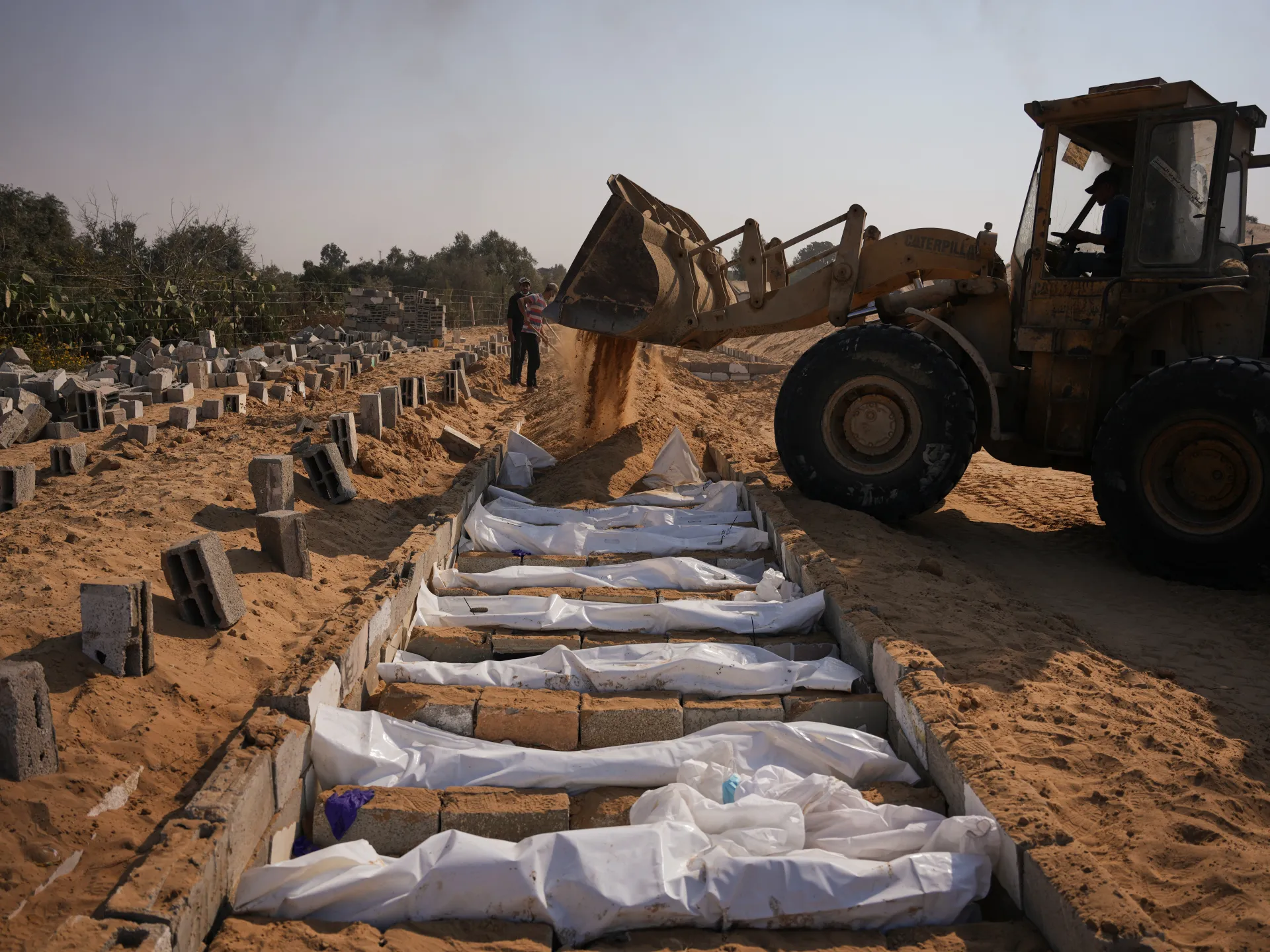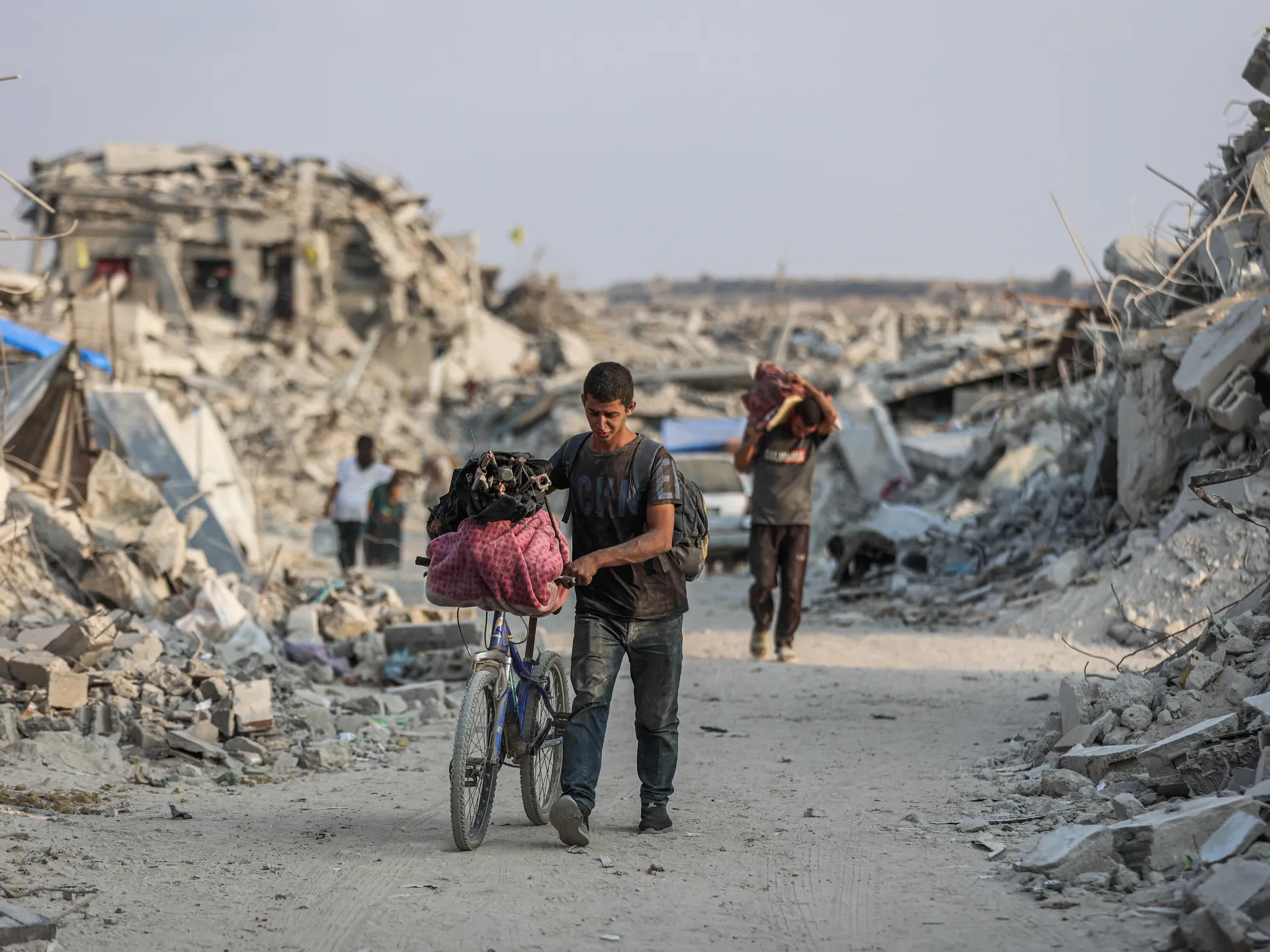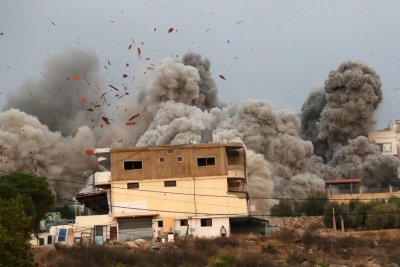Smoke rises after an Israeli airstrike on Tayr Debba town in southern Lebanon on Thursday. The Israeli army announced it had launched a series of strikes on Hezbollah targets in southern Lebanon. Photo by Wael Hamzeh/EPA
BEIRUT, Lebanon, Nov. 7 (UPI) — Lebanon faces the dilemma of whether to go ahead with negotiations with Israel to end the ongoing cycle of violence and prevent a full-scale war despite Hezbollah‘s rejection of the talks — highlighting a deep political divide within the country.
The Hezbollah-Israel war, which broke out when the Iran-backed group opened a support front for Gaza on Oct. 8, 2023, never came to an end, even after a cease-fire agreement was reached on Nov. 27, 2024.
Israel has continued its unrestrained attacks on Hezbollah, causing further casualties and destruction. It has refused to withdraw from five strategic positions it still occupies in southern Lebanon, refrained from releasing Lebanese prisoners detained during the war, and prevented displaced residents from returning to their border villages turned to ruin.
The Lebanese Army’s successful advance in taking control of southern Lebanon and eliminating Hezbollah’s military presence along the border and south of the Litani River, as stipulated by the cease-fire agreement, does not seem sufficient for Israel, which wants Hezbollah to be completely disarmed.
In fact, Hezbollah, which suffered heavy losses during the war, has refrained from firing a single shot in retaliation to Israel’s continued air and drone strikes, which allegedly target the group’s remaining arms depots and military infrastructure beyond southern areas of the Litani River.
However, Hezbollah’s recent claims that it has fully recovered, restructured its military capabilities and rebuilt its command structure — coupled with its refusal to disarm or support Lebanese President Joseph Aoun in his new approach to negotiations with Israel — put the country at risk of another round of war.
While Aoun said that Lebanon has no choice but to engage in talks with Israel to end its occupation and halt its attacks, Hezbollah rejected any attempt to involve the country in new negotiations — outside the framework of the “mechanism” committee responsible for supervising the implementation of the ceasefire accord — arguing that they would only serve “the enemy and its interests.”
Hisham Jaber, a Lebanese military expert and former Army general, said it is the Lebanese state — not Hezbollah — that should negotiate with Israel, based on terms set by President Aoun: no direct or political negotiations, only military-security talks conducted via a third party, such as the U.S. or the United Nations, and no use of force to complete Hezbollah’s disarmament.
Jaber said that indirect talks with Israel had proven successful, recalling the 2022 U.S.-mediated maritime border deal that ended a years-long dispute between Lebanon and Israel over the ownership of natural gas fields.
“Why not do that again?” he told UPI. But to sit at the negotiation table, he added, the United States, which is pressuring Lebanon to accept the talks, should ensure that Israel withdraws from southern Lebanon and releases the prisoners, instead of “cornering us.”
What Lebanon wants is for Israel to abide by the truce accord through the “mechanism” committee, which is made up of Israel, Lebanon, the United States, France and the United Nations. However, the newly proposed negotiations, although their framework is still unclear, would also address land border disputes and other issues.
“There is a need for an agreement on the disputed points along the border, and this is not within the mandate of the mechanism,” said Riad Kahwaji, a Middle East security analyst, adding that the truce committee is charged with ensuring Hezbollah’s disarmament, the return of prisoners, and Israel’s withdrawal behind the [U.N.-drawn] Blue Line that existed before the last war in October 2023.
If the new negotiations with Israel proceed and result in a final land border agreement, it would lead to the cessation of the state of war between the two countries, and “the 1949 Armistice will prevail,” Kahwaji said..
“But, of course, Hezbollah does not want an end to the state of war between Lebanon and Israel, because that would require it to disarm, causing it to lose its value for Iran and its significance and standing within its own popular base,” he told UPI. “Its resistance will no longer be needed or relevant.”
However, Hezbollah’s attempts to rearm appear extremely difficult after the group lost its main supply route after the overthrow of its key ally, Syrian President Bashar Assad, as well as its long-standing access to Beirut’s port and airport, which it had used for years to smuggle weapons and funds.
It is now impossible for Hezbollah to smuggle large weapons, such as heavy missiles, across the border with Syria, though it may still attempt to acquire Grad rockets, anti-tank Kornet missiles and drones.
“If Hezbollah goes into another war with Israel, it will be using whatever is left from its arsenal, which is not that much,” Kahwaji said, noting that the group now has “a different leadership” after Israel killed most of its top leaders and military commanders, and that “its popular base is exhausted … so the repercussions will be huge.”
Israeli Prime Minister Benjamin Netanyahu “is acting as a victor,” refusing to make any concessions and imposing all his conditions, he added.
Lebanon has been facing mounting pressure, especially from the United States and Israel, to disarm Hezbollah even forcibly. Authorities prefer a quiet approach to avoid a confrontation between the Lebanese Army and the militant group, which could create divisions within the army and potentially spark a civil war.
Jaber, the former Army general who is well-informed about Hezbollah, said Washington should instead understand and support Lebanon’s approach, because the group “is ready to hand over its weapons” if Israel stops its attacks and withdraws in line with the truce accord.
“Hezbollah is prepared to relinquish its offensive weapons first, followed by its defensive weapons at a later stage, as part of a national defense strategy,” he said. “This is now an attrition war, not between two parties, but led by only one [Israel].”
Iran, which has funded and armed Hezbollah since its formation in the early 1980s, no longer is interfering in the group’s day-to-day affairs, but remains keen to preserve it as a political and military entity -a card in its hand — after “losing all its other cards in the region,” Jaber said.
With Israel threatening to expand its attacks and launch a full-scale war to force the complete disarmament of Hezbollah, Lebanon remains with few options: diplomacy and political pressure.
“It is in Lebanon’s best interest to seize this opportunity and drag Israel into negotiations to end the war and the conflict,” Kahwaji said.



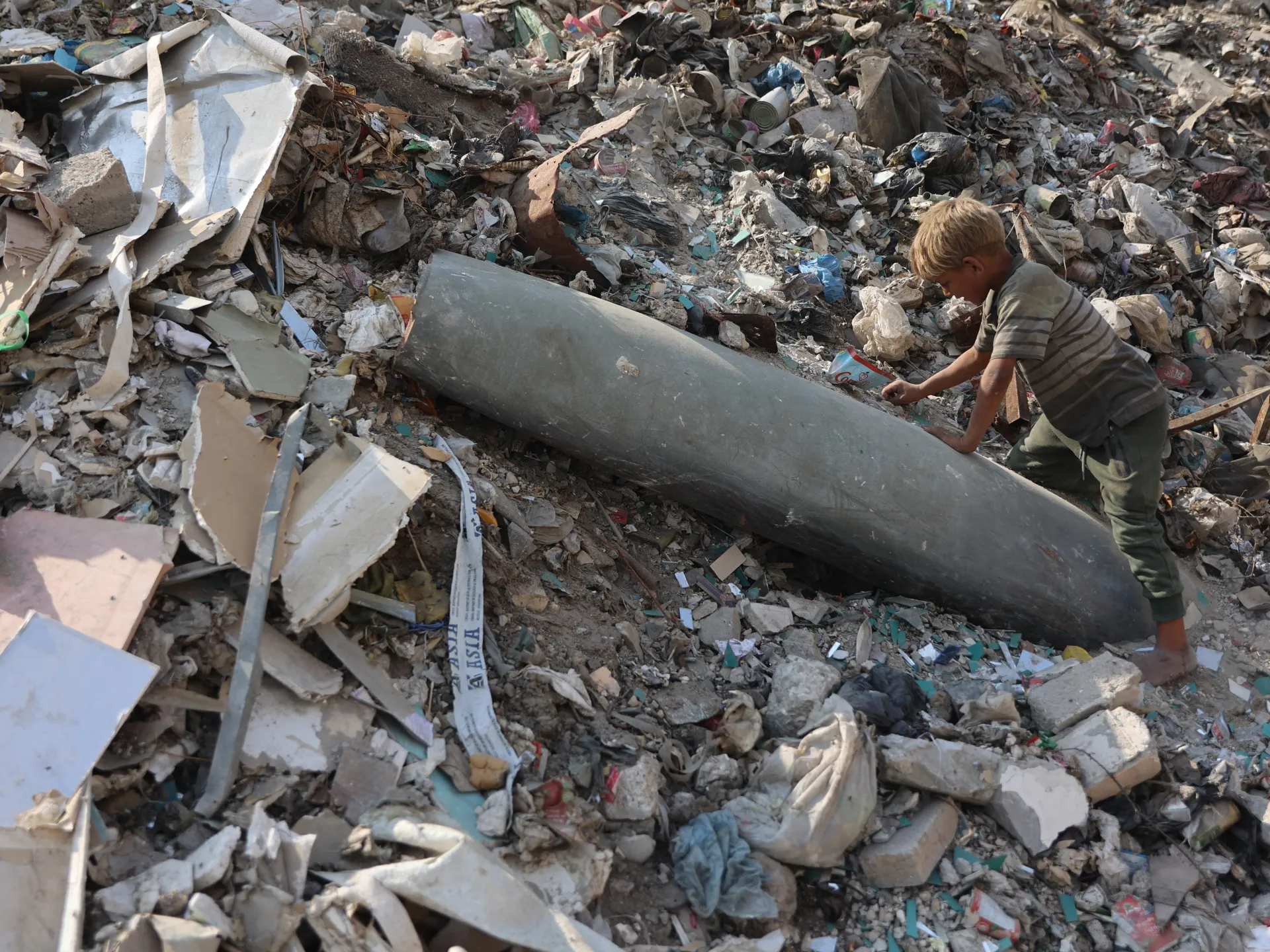

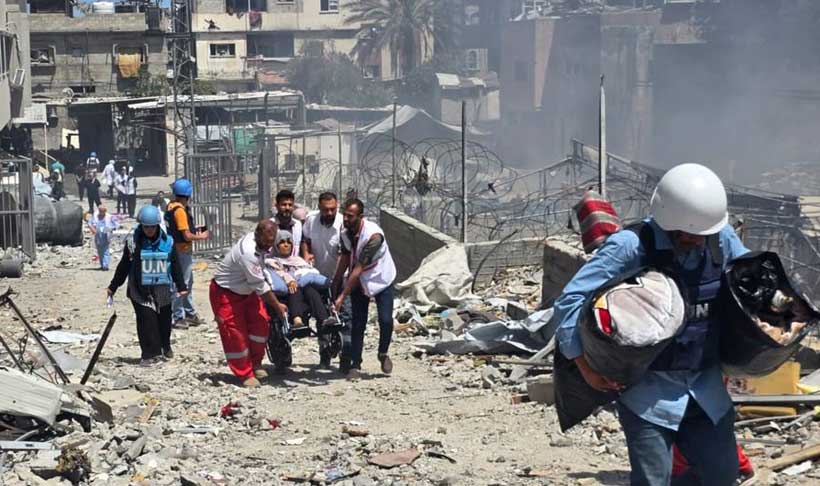
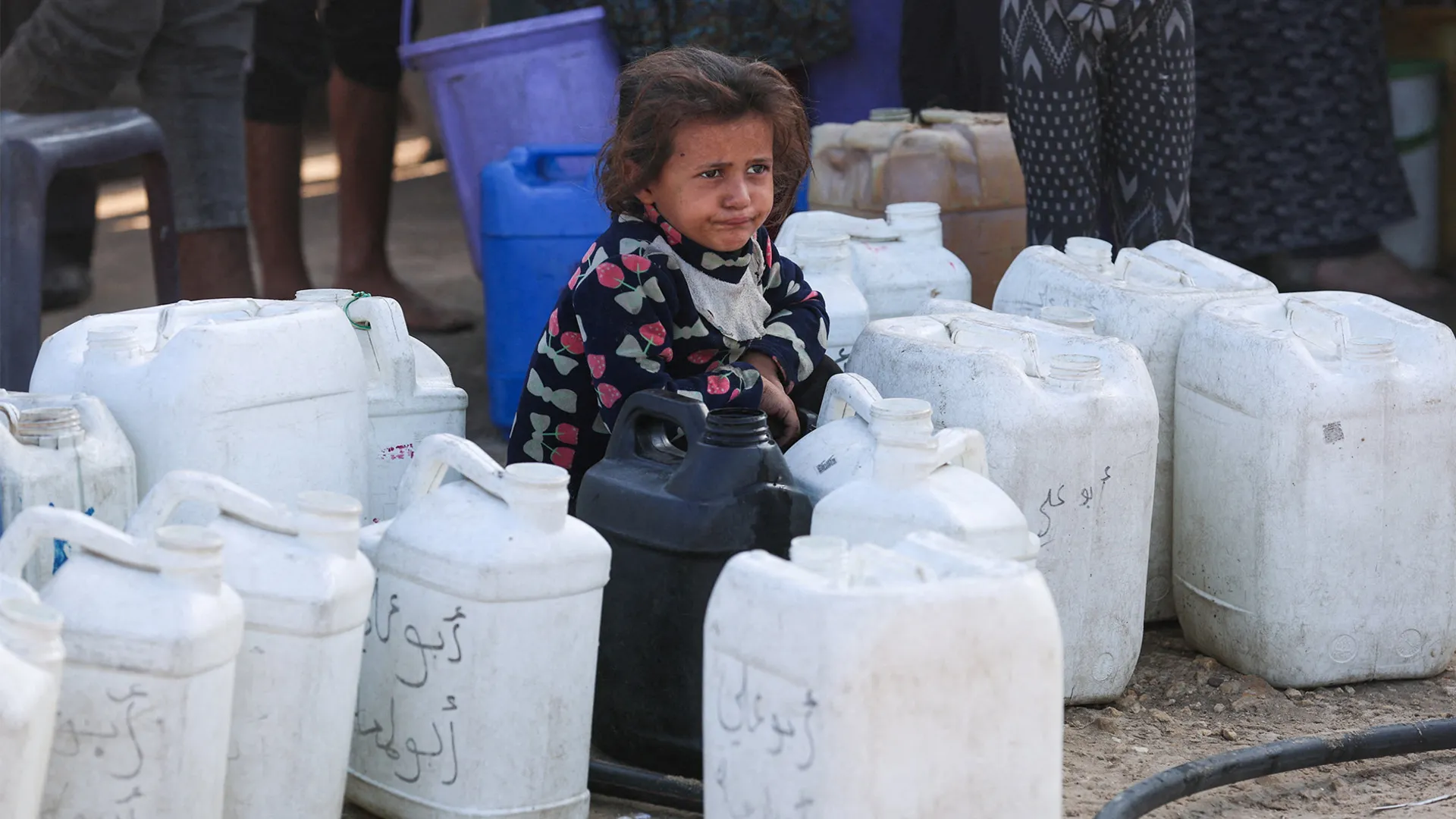
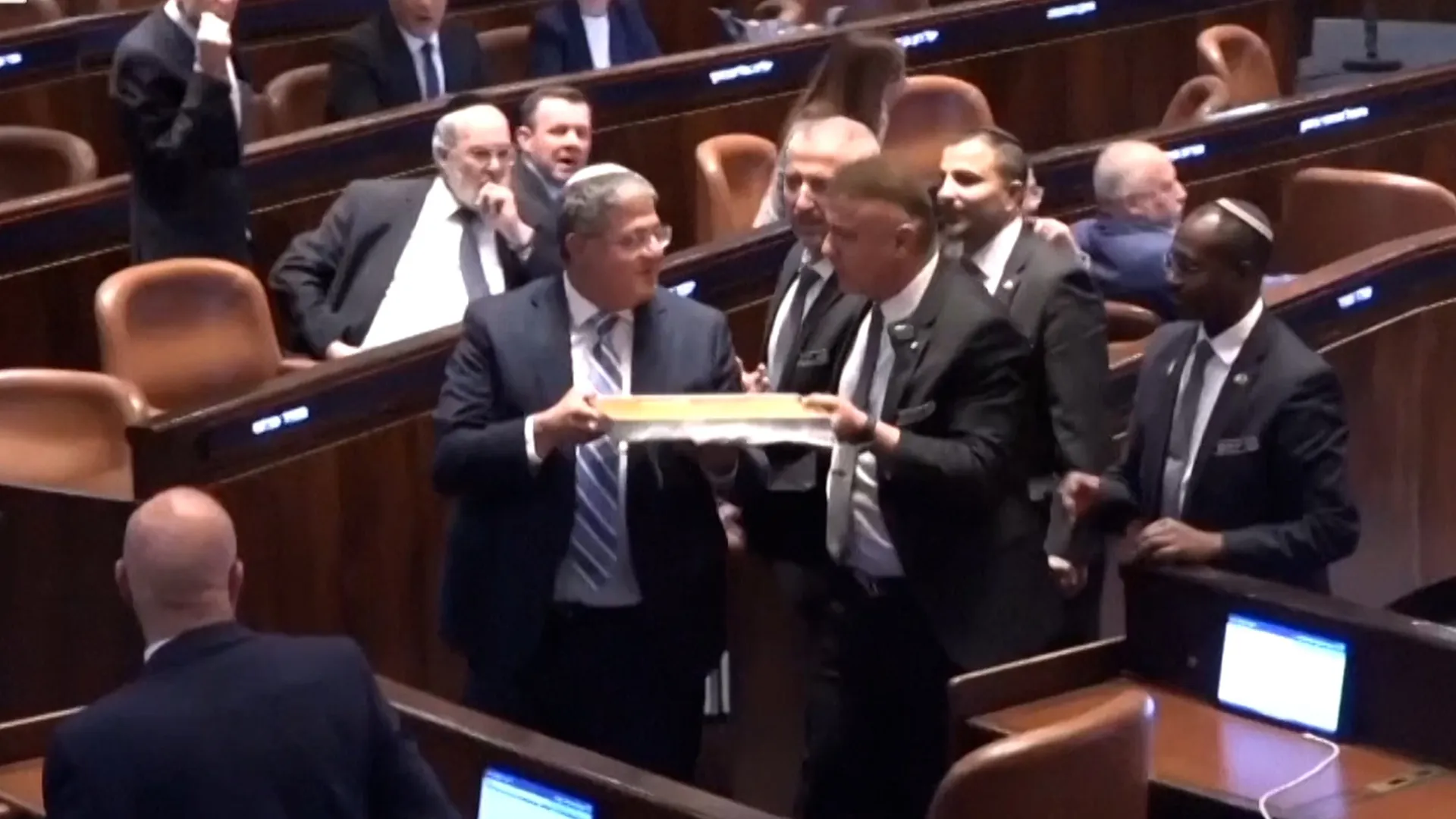

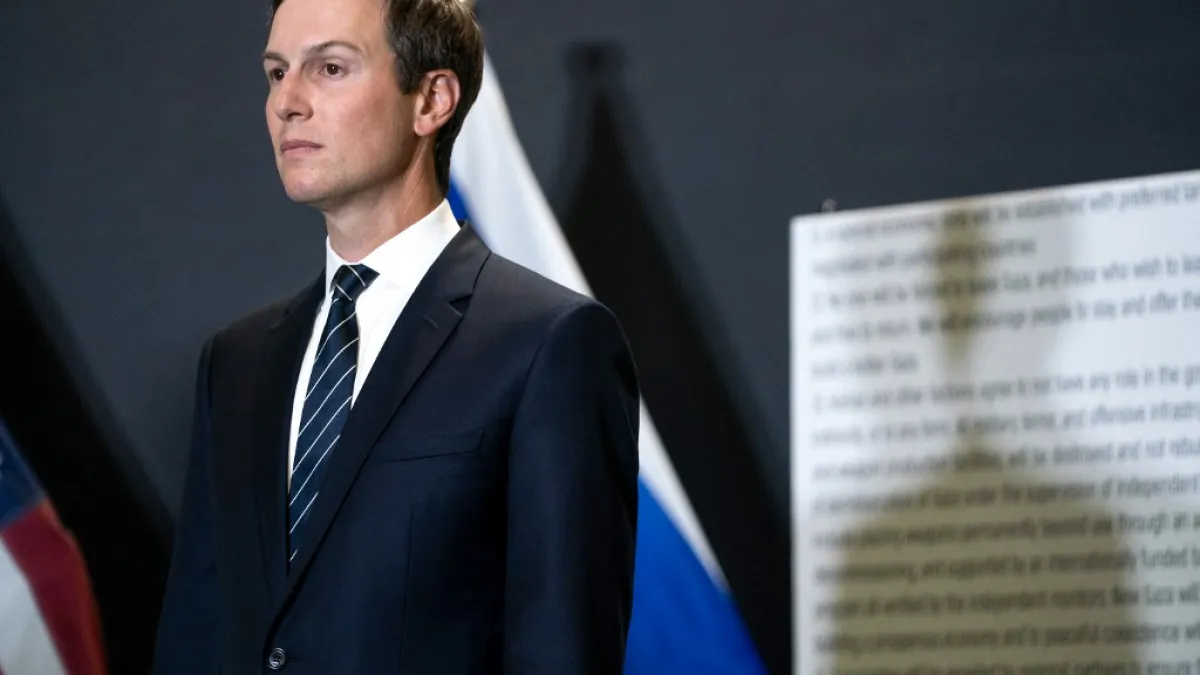
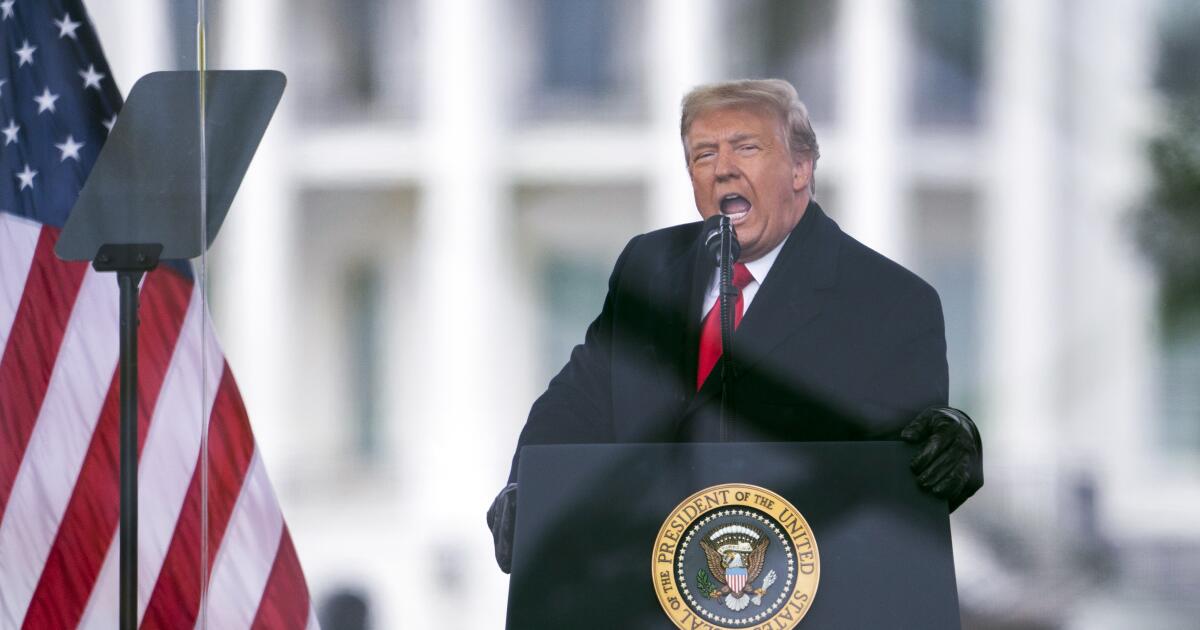


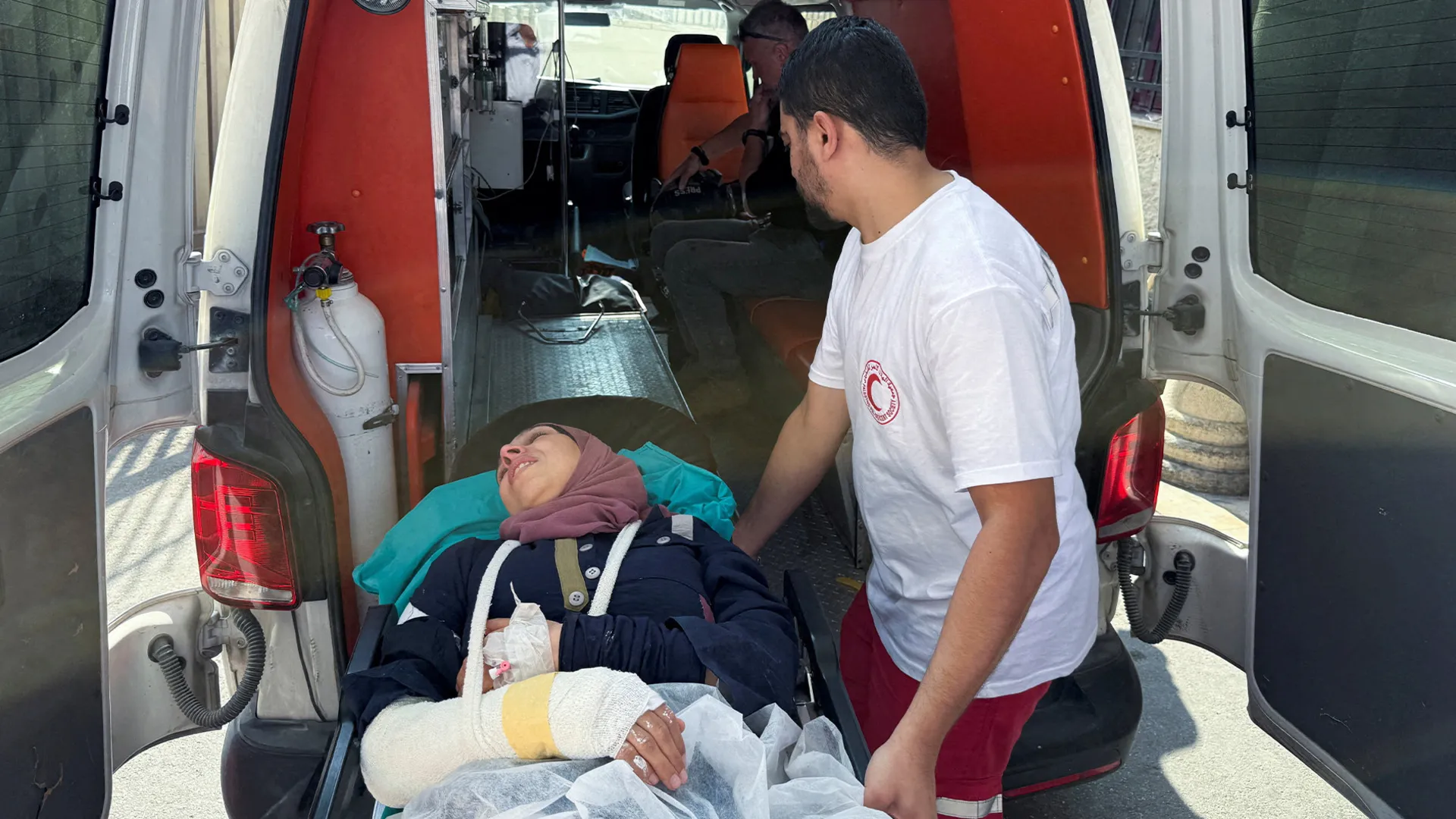







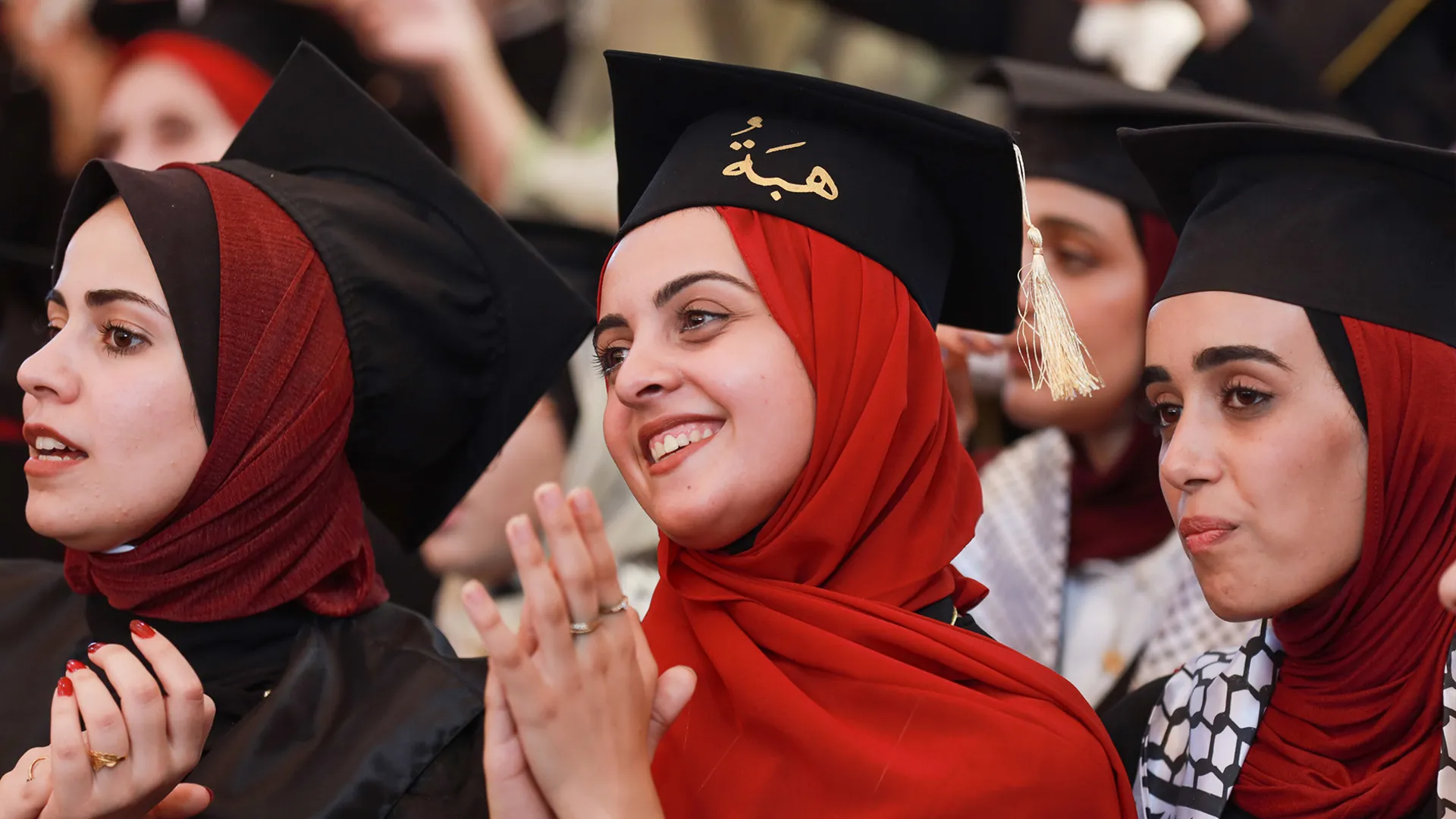
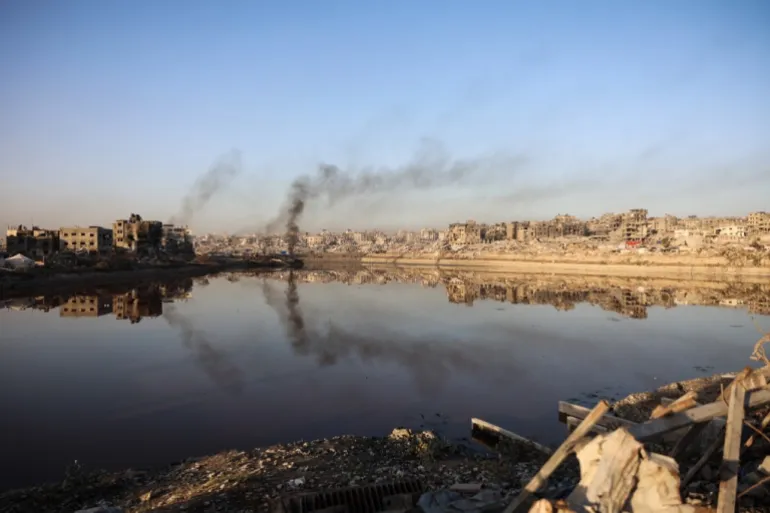
![Heavily damaged buildings are reflected in a water basin in the Sheikh Radwan neighborhood of Gaza City on October 22, 2025. [File: Omar Al-Qattaa/AFP]](https://i0.wp.com/occasionaldigest.com/wp-content/uploads/2025/11/000_79L4482-1762593853.jpg?w=640&ssl=1)
![A boy fills a plastic bottle with water inside a camp for displaced Palestinians at a school-turned-shelter in Al-Rimal neighbourhood of Gaza City on November 5, 2025. [File: Omar Al Qattaa]](https://i0.wp.com/occasionaldigest.com/wp-content/uploads/2025/11/000_834T3FC-1762594052.jpg?w=640&ssl=1)
